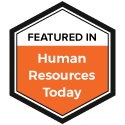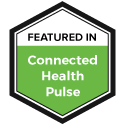3 minute read:
President Trump announced his intent to make administrative changes to the Affordable Care Act in 2017 as part of this executive order, “Promoting Healthcare Choice and Competition Across the United States.” None of these changes, however, affected the law’s Employer Mandate. Here’s the latest on these changes.
State Relief and Empowerment Waivers guidance. The Centers for Medicare & Medicaid Services (CMS) and the U.S. Department of Treasury issued guidance on state waivers in October 2018. The new State Relief and Empowerment Waivers provide states flexibility to address problems with individual insurance markets, increase coverage options for individuals, and encourage states to adopt innovative strategies to reduce future overall health care spending. Under the guidance, states have been given much more freedom and flexibility in the types of relief and empowerment waivers they can provide. The guidance provides five principles that establish waivers:
- Provide increased access to affordable private market coverage.
- Encourage sustainable spending growth.
- Support and empower Americans with access to affordable, high value health insurance.
- Foster state innovation.
- Support consumer-driven healthcare.
CMS this month offered new resources to support states with improving their health insurance markets and making coverage more affordable through State Relief and Empowerment Waivers, also known as section 1332 waivers. According to a recent press release, these new resources include a checklist of required waiver elements and model templates designed to help states better understand and navigate the section 1332 waiver application process.
Expanding Health Reimbursement Arrangements (HRAs). The U.S. Department of Health and Human Services (HHS), the U.S. Department of Labor (DOL) and the U.S. Department of Treasury have released a final rule that would allow employers to use HRAs to reimburse employees for the cost of individual health insurance coverage. It’s argued that the expansion of HRA use would make the individual marketplace more competitive by giving employees an opportunity to purchase healthcare on their own, with the aid of funding from their employers in exchange for electing to opt out of company-sponsored health coverage.
The final rule, which goes into effect on August 19, 2019 and becomes applicable to plans starting January 2020, allows employers to use individual coverage HRAs to provide their workers with tax-preferred funds to pay for the cost of health insurance coverage that they purchase in the individual health insurance marketplace. When the new rule goes into effect in January 2020, HRA accounts can be used by individuals to fund health insurance premiums and out-of-pocket expenses, according to a post by Health Affairs.
The federal government estimates this expansion of the use of HRAs will benefit approximately 800,000 employers and more than 11 million employees and family members, including an estimated 800,000 Americans who were previously uninsured, according to a government press release.
This is similar to what Fierce Healthcare reported in October 2018: “Officials estimate 10 million people would purchase insurance through HRAs, including 1 million people that were not previously insured. Most of those people would be concentrated in small and mid-sized businesses.”
An element of the ACA that has continued to avoid the political spotlight is the ACA’s Employer Mandate.
Under the Employer Mandate, Applicable Large Employers (ALEs), organizations with 50 or more full-time employees and full-time equivalent employees, are required to offer Minimum Essential Coverage (MEC) to at least 95% of their full-time workforce (and their dependents) whereby such coverage meets Minimum Value (MV) and is Affordable for the employee or be subject to IRS 4980H penalties presented in IRS Letter 226J. The IRS has begun sending Letter 226J penalty notices to employers who failed to comply with the ACA for the 2017 tax year. If your organization has received one, download this guide on how to respond.
Employers also may receive ACA penalties for failing to file forms 1094-C and 1095-C with the IRS or furnish 1095-C forms to employees under IRC 6721/6722. This IRS penalty notice – IRS Letter 5005A – addresses the failure of employers to distribute 1095-C forms to employees and to file 1094-C and 1095-C forms with the federal tax agency by required deadlines. The IRS is sending the proposed penalty assessments using Letter 5005A and Form 886A. These are penalties in addition to penalties for not offering the required healthcare coverage under IRC 4980H. Learn more about IRS Letter 5005A by clicking here.
Organizations should elect to have a cost-free ACA Penalty Risk Assessment performed to learn about their potential exposure and strengthen their ACA compliance.
![Trump Tries to Change the ACA, But Not The Employer Mandate [UPDATE]](https://acatimes.com/wp-content/uploads/AdobeStock_71101565_1280px-300x200.jpg)






